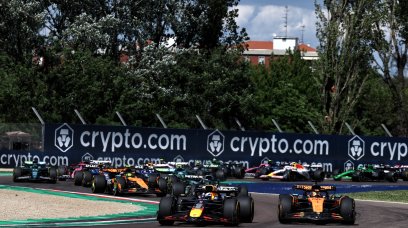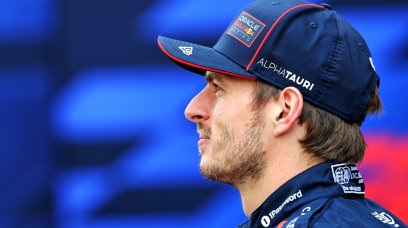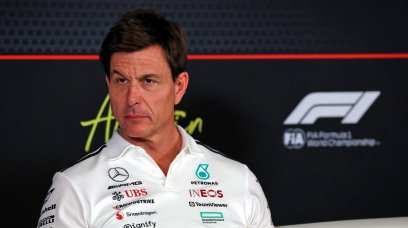Red Bull's RB18 machine of the 2022 Formula 1 season will go down as one of the most successful designs in the history of the championship. For chief designer Adrian Newey that is quite an achievement given his reputation for designing some of the most iconic cars down the years. However, translating a theoretical design into a quick race car is a tall order. This is the remit of Red Bull chief engineer Paul Monaghan whose brief it is to work with Max Verstappen and Sergio Perez to extract every last drop of performance out of the package on each race weekend. In an exclusive interview with RacingNews365.com , Monaghan describes how the teams have been forced to adapt to the new rules when it comes to setting up their cars - and what the most sensitive part of the car now is.
Working within the rules
The new rules introduced were heavily-tested by F1, with set limitations on how teams could design their cars - as Monaghan explains. "The [design area] boxes weren't necessarily quite as orthogonal as they used to be, the interpretation hasn't changed hugely," he says. "The restriction on the shapes we can put in the boxes is far greater than it has been, even with the front wing [changes] that came in for 2019, it took a lot of curvature. "If you change the rules, you can't apply the same interpretation as you did before, so you change and you adapt, and you fit within the boxes. "There's no point in drawing an illegal car because you won't get very far with it."
The most sensitive part of the car
The underbody of the car is now extremely powerful in delivering performance thanks to ground effects and the venturi tunnels. An example of what can happen when these are blocked was seen at the British Grand Prix when Verstappen ran over debris, collecting a piece of an AlphaTauri in one of the tunnels. His performance drastically dropped off as he struggled home to seventh having been leading before the incident. The idea of ground effects is to run the car as close to the track as is possible - hence why the infamous Brabham BT46B 'fan car' was so dominant on debut in at the 1978 Swedish Grand Prix. And Monaghan believes this is linked to the most sensitive part of the car to correctly set-up. "You could say ride height [is the most sensitive], but don't forget, if it's ride height, you're potentially involving the suspension stiffness," he says. "So you can't separate one from the other. If you want to run your car closer to the ground, chances are you're probably having to [increase] the suspension stiffness. "The question then is: 'Can your car run in those conditions at the circuit where you are competing?'. "The ride height was a significant player but it didn't come along in isolation." When pushed about what the second most sensitive part of the set-up is, Monaghan couldn't select one particular parameter, but did check aerodynamics. "I wouldn't want to say any one part of the setup was utterly dominant over another as you can't change one aspect without influencing another," he explains. "Your compromises can't be individual topics. "If we got one bit wrong, then the lap time suffers, and you then correct two or three things to get yourself back into a more competitive situation. "Now I wouldn't have said at any one race [that] we made relatively large changes in any of the tuneable topics without influencing others. "You can't put it in a pecking order [of the most sensitive set-up parameters] but overall performance is obviously sensitivity and aerodynamics, they're largely an aerodynamic exercise. "If you get the complimentary functions wrong, you're not going to be quick."
Monaghan: One setup challenge hasn't changed
When cars roll out for qualifying they are in parc ferme conditions, meaning their set-up is locked in for the qualifying session and Grand Prix on Sunday - albeit a few minor tweaks are allowed such as front wing angle and tyre pressures. Despite the massive overhaul of the F1 cars from 2021 to 2022, Monaghan explains how the overall process for setting up the cars on a race weekend has remained mostly the same. "When you have evolved over the last few years in a certain way for qualifying ahead of the race, if we get that compromise right, then our competitiveness puts us as far up [the grid] - and scores us as many points - as we can. "That is your main aim at the end of the day, and if you are on pole and don't execute that to a race win [you've gone wrong]. "You can change the tyre pressures, front wing and not have DRS in the race - that's it. You can't make colossal changes." "If we qualify third and we win the race, then we've got it right."
Most read






